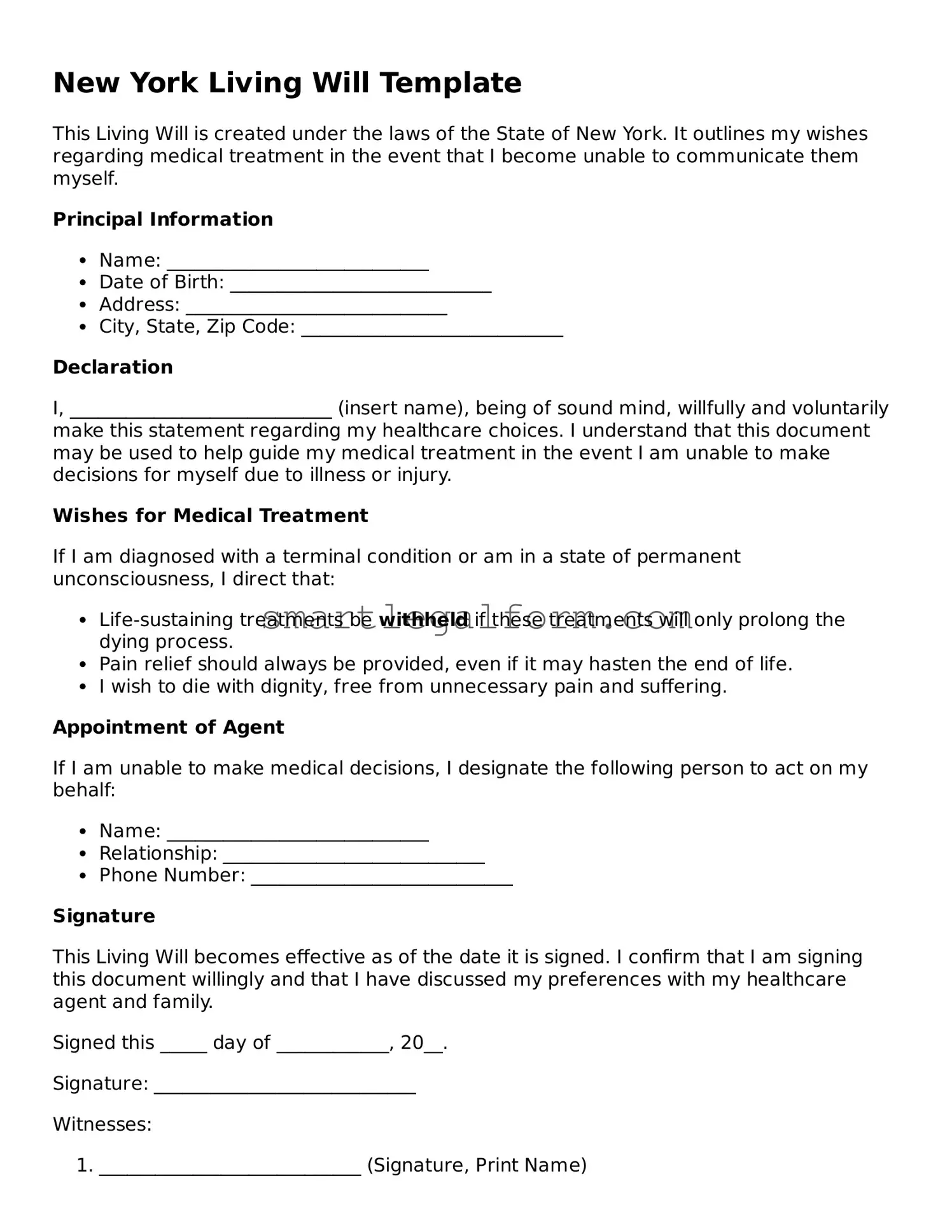New York Living Will Template
This Living Will is created under the laws of the State of New York. It outlines my wishes regarding medical treatment in the event that I become unable to communicate them myself.
Principal Information
- Name: ____________________________
- Date of Birth: ____________________________
- Address: ____________________________
- City, State, Zip Code: ____________________________
Declaration
I, ____________________________ (insert name), being of sound mind, willfully and voluntarily make this statement regarding my healthcare choices. I understand that this document may be used to help guide my medical treatment in the event I am unable to make decisions for myself due to illness or injury.
Wishes for Medical Treatment
If I am diagnosed with a terminal condition or am in a state of permanent unconsciousness, I direct that:
- Life-sustaining treatments be withheld if these treatments will only prolong the dying process.
- Pain relief should always be provided, even if it may hasten the end of life.
- I wish to die with dignity, free from unnecessary pain and suffering.
Appointment of Agent
If I am unable to make medical decisions, I designate the following person to act on my behalf:
- Name: ____________________________
- Relationship: ____________________________
- Phone Number: ____________________________
Signature
This Living Will becomes effective as of the date it is signed. I confirm that I am signing this document willingly and that I have discussed my preferences with my healthcare agent and family.
Signed this _____ day of ____________, 20__.
Signature: ____________________________
Witnesses:
- ____________________________ (Signature, Print Name)
- ____________________________ (Signature, Print Name)
Note: It is advisable to consult with an attorney or healthcare professional when creating your Living Will to ensure it reflects your wishes and complies with current laws.
